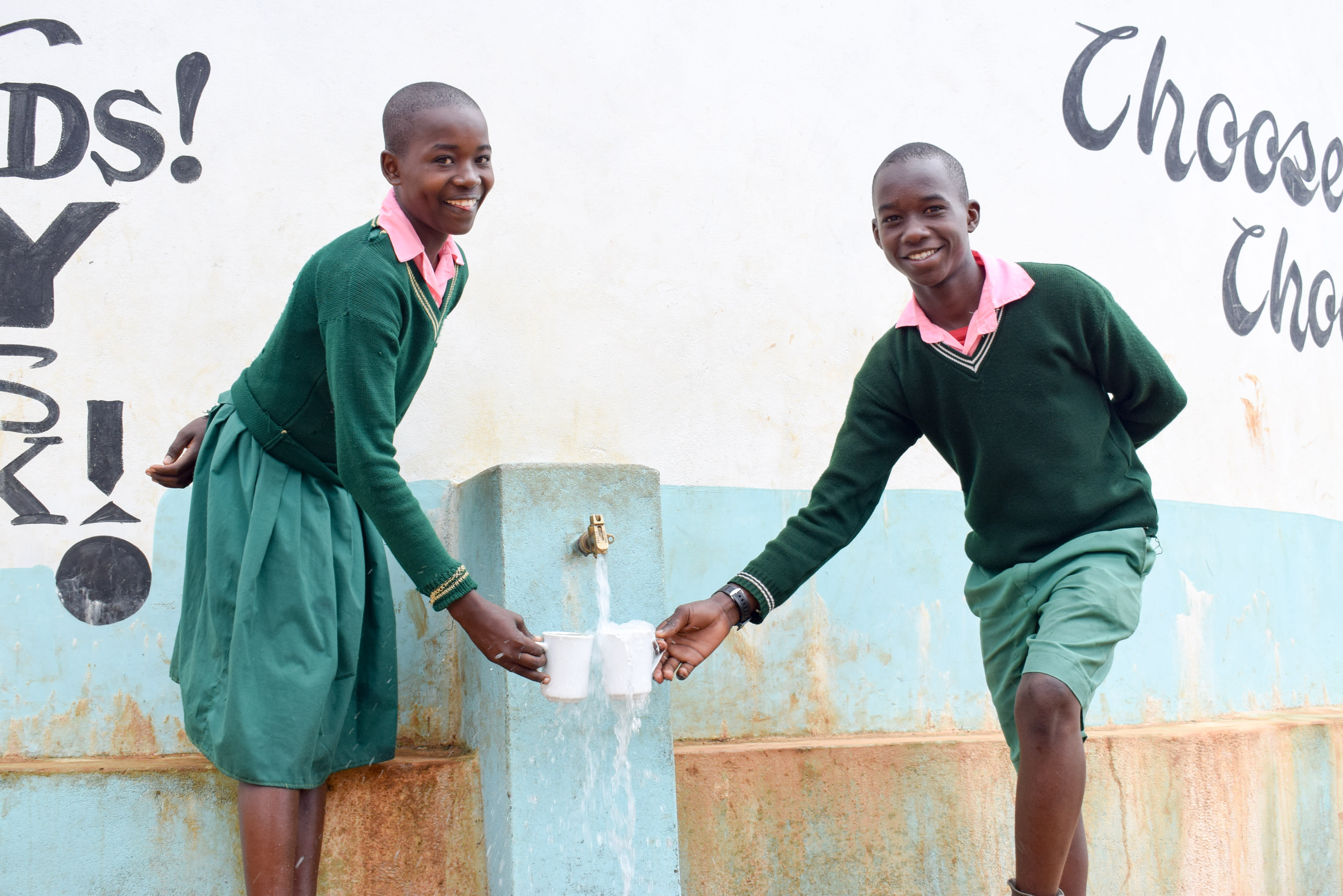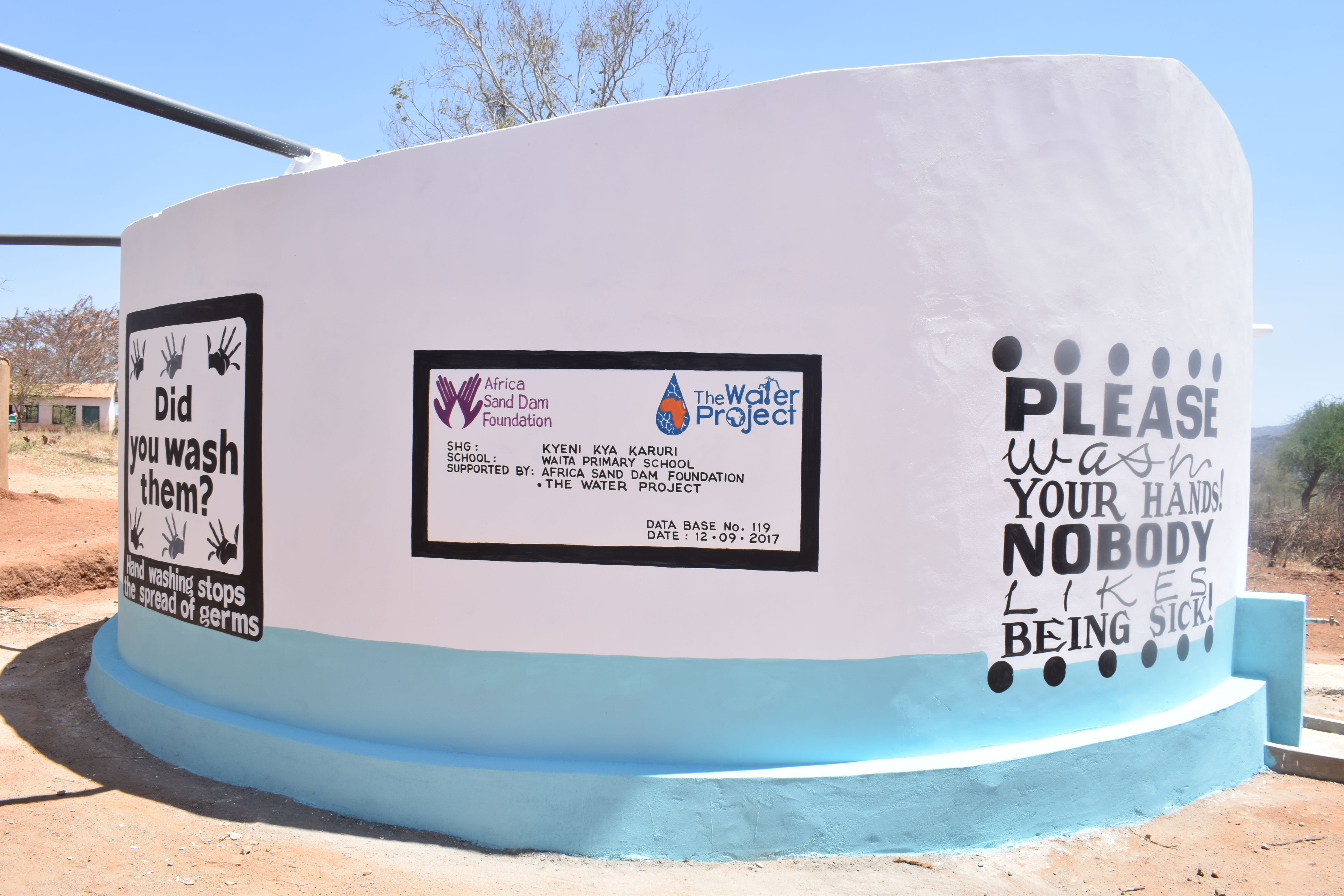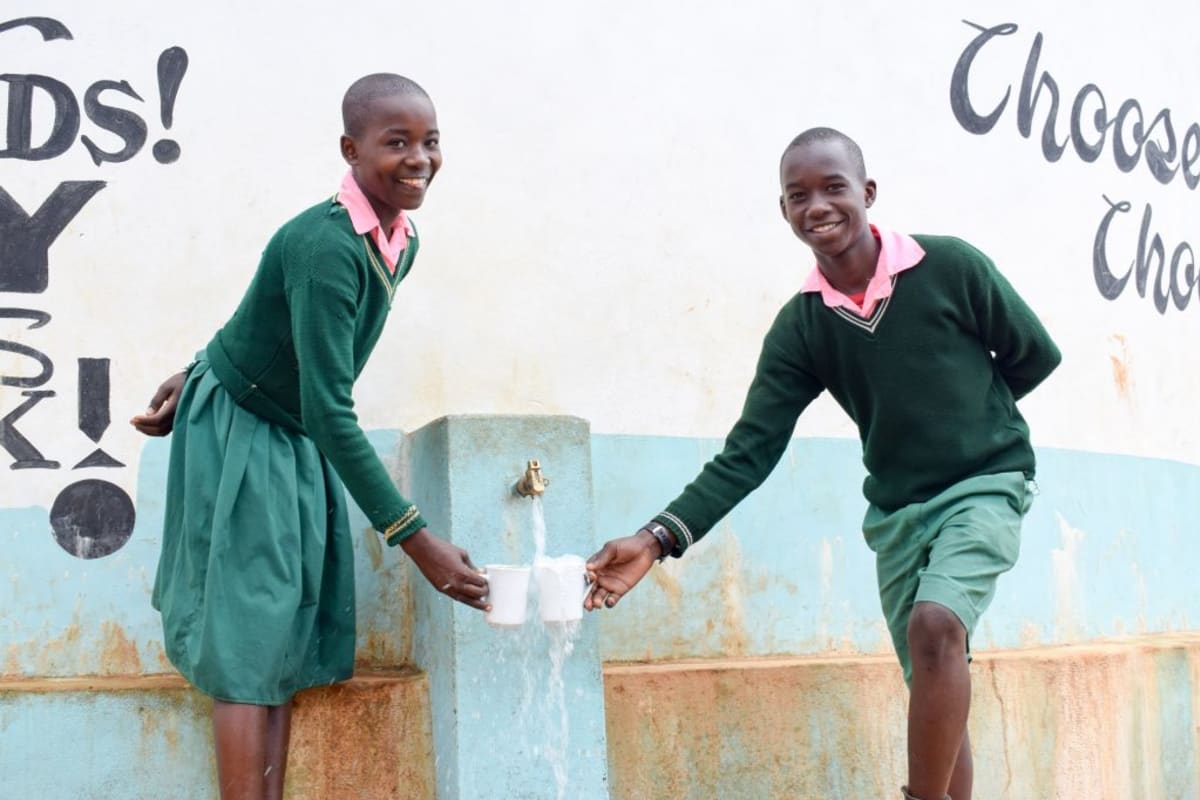This project is a part of our shared program with Africa Sand Dam Foundation. Our team is pleased to directly share the below report (edited for clarity, as needed).
Welcome to the School
Waita Primary School was started in 1949 to offer education to the children of Waita Village. The school has a total population of 329 students, of which 168 are boys and 161 are girls. The school employs 12 teachers and two support staff.
The school has enjoyed a close relationship with Kyeni kya Karuri Self-Help Group, which has been working with ASDF since 2015. Members of Kyeni kya Karuri SHG are parents of students attending this school, and are well aware of the dire water situation and needs at the learning facility. It is for this reason that they proposed the construction of a water tank to help alleviate the suffering that their children go through. Their affiliation to Kyeni kya Karuri SHG and the alarming water access challenges that the pupils go through are the main reasons why the school has been accepted for a water project.
Water Situation
The school is connected to the Tanathi water project pipeline. This system has proved unreliable. At the time of our first visit, the school reported that the tap had been dry for a week already. When the tap does produce water, the school feeds it into a 10,000-liter plastic tank. Whenever the school gets enough water from the tap to completely fill this tank, it lasts them about one month with strict rationing.
The school used to have some concrete tanks, but they have fallen into disrepair.
Students are required to carry three to five liters of water to school every day that the pipes aren't working. When the system fails unexpectedly, the school has to order water from local water vendors. These vendors fetch water from rivers to fill their drums, which they sell for 100 shillings each.
13-year-old student Esther Mutheu told us that "Sometimes, the available water is colored and unsafe for drinking, but we resort to using it because we lack better other options. This places us at a high risk of contracting waterborne diseases. Many have been reported in the past!"
Sanitation Situation
There are seven pit latrines; three for female students, two for male students, and two for teachers. The field officer also observed that open defecation is an issue here, with students not willing to wait in line for their turn at the latrines.
There is one hand-washing station, but this is intended for teachers' use only. Garbage is thrown in one specific area, but it is not in a pit to keep it from blowing around the school grounds.
Plans: Hygiene and Sanitation Training
Students and staff will be trained for one day. Those in attendance will form a school health club that will promote good hygiene and sanitation practices both at school and home. They will learn all of the steps to proper hand-washing, how to treat water, and how to keep their environment clean. The school will also be taught how to best oversee and maintain their new rainwater catchment tank and hand-washing stations.
Plans: Hand-Washing Stations
Three hand-washing stations will be delivered at the project’s completion. These are 1,000-liter plastic tanks fitted with four taps. The health club and school management will be responsible for making sure tanks are filled with water and that a cleaning agent such as soap or ash is available.
Plans: Rainwater Catchment Tank
We will build a 104,000-liter rainwater catchment tank for this school. This water will benefit the students, teachers, and supplementary staff. Parents will mobilize the materials needed for construction, such as sand and stone. They will also lend some strong arms to help with the actual construction.
The huge capacity of this tank makes the others look tiny in comparison; 104,000 liters should collect enough water to carry students through the entire dry season. As soon as the tank has time to cure, it can begin to collect rainwater for drinking, cooking and cleaning!



 Rehabilitation Project
Rehabilitation Project






























